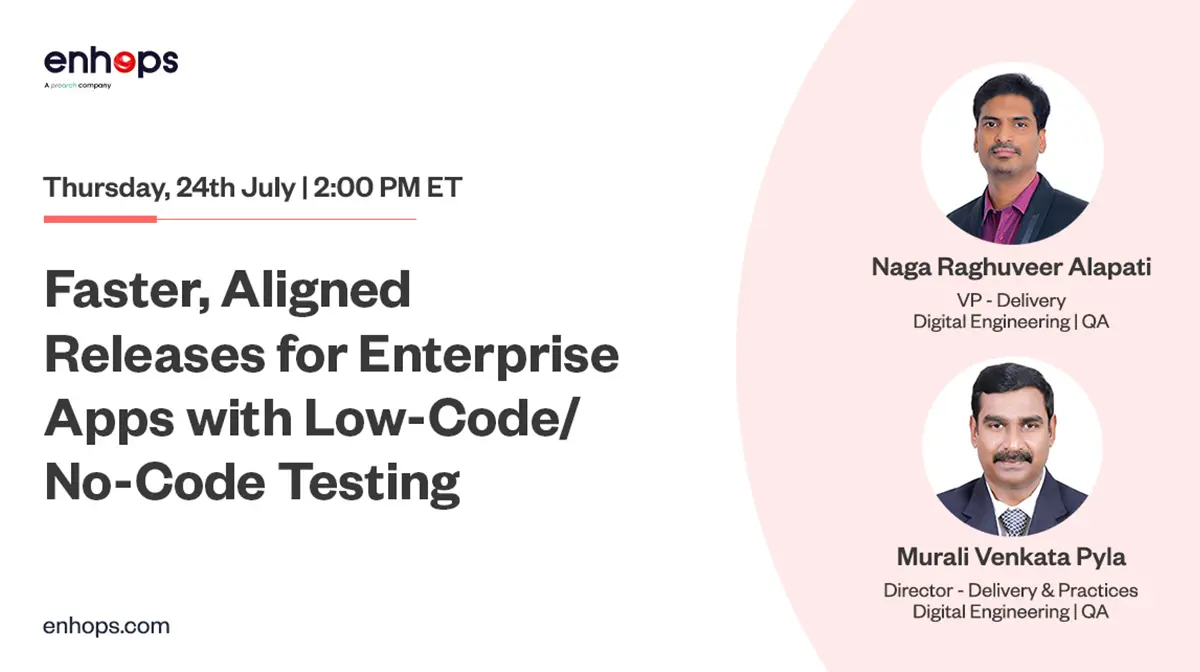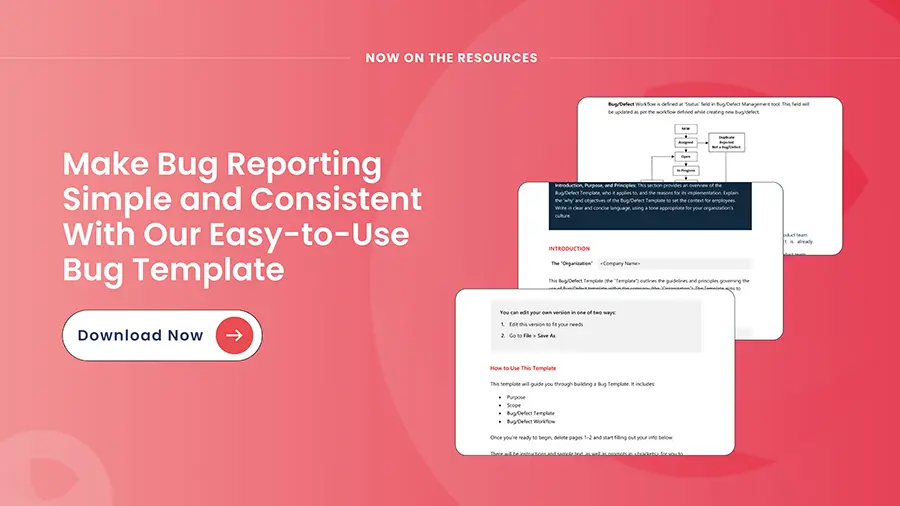BFSI industry is experiencing an interesting conjunction where consumers want physical presence of banks and financial institutions, but they prefer multi-channel ways of doing transactions, opening accounts, paying loans, and bills. At the core of these multiple ways of banking, there are various digital applications powering thousands of business-critical functions. These applications must provide exceptional customer experience to act as key differentiator for banking and financial institutions.
The Global Digital Transformation in BFSI market size was valued @ $52.44Bn in 2019 and is projected to reach $164.08Bn by 2027, growing at a CARG of 15.4%from 2020 to 2027
– Source Allied Market Research
Hence, banks must prioritize delivering digital customer experience that ensure that customers can fulfill all their financial needs conveniently with utmost security and comfort.
The question is how to deliver top-notch customer experience for BFSI customers
Very simple answer to this is – Building High-Quality Digital Applications. This requires quality engineering mindset and practices embedded across organization and development teams.
With rising customer expectations, Quality Engineering has shifted from being an afterthought to having a pivotal role in delivering superior customer experience. Test Automation, Agile Testing, and Continuous Testing are becoming increasingly popular practices used by technology leaders to achieve a quality engineering mindset or model in organization.
While these processes are promising and results into delivering high-quality digital applications, 9 out of 10 BFSI technology leaders and managers are still struggling with manual testing and trying to find right test automation skills sets and tools.
At Enhops, we have worked with bank technology and financial institutions service providers and BFSI companies to streamline their quality engineering practices using test automation and agile testing practices. Our domain and technical experts work closely with the client teams to understand the application, current challenges, and how test automation can bridge the gap between quality and development.
In this blog we outline the process that we follow in building test automation capabilities for our BFSI clients. Keep reading!
Upgrade your customer experience with
end-to-end test automation services
Automation Testing Process for BFSI applications
Before we head on to understand testing process for BFSI application, it is important to take a quick look at the characteristics of BFSI applications. Some of the key characteristics of BFSI applications include:
- Security: Since BFSI applications deal with sensitive financial information, security is a key characteristic. BFSI applications are typically built with strong security measures in place to protect against unauthorized access and data breaches. These security measures must extend while integrating legacy applications to new-age applications.
- Compliance: BFSI applications must comply with various regulatory standards and requirements in order to operate legally. For example, applications used in the banking industry must comply with Know Your Customer (KYC) and Anti-Money Laundering (AML) regulations.
- Integration: BFSI applications often need to integrate with other systems and applications in order to exchange data and perform transactions. For example, a banking application may need to integrate with a payment processing system in order to facilitate online transactions.
- User-friendliness: BFSI applications are often used by a wide range of users, including both customers and employees. As a result, these applications need to be user-friendly and easy to use in order to ensure that users can effectively interact with them.
- Performance: Performance is important for the overall efficiency and reliability of BFSI applications. Well performing Applications can process transactions and other financial services quickly and accurately, improving the efficiency and reliability of the BFSI industries as a whole.
Overall, BFSI applications are designed to support the financial services and transactions of the BFSI industries, and are built with security, compliance, integration, user-friendliness, and performance in mind.
It is important to keep these characteristics in mind and design effective test automation process for BFSI applications. Some key steps that are involved in designing test automation process for BFSI applications are –
- Requirements Gathering – In BFSI application testing, requirements gathering refers to the process of identifying and documenting the specific goals and objectives that a BFSI application or system is expected to achieve. This is done at the beginning of the testing process, but it also keeps evolving as the system evolves and business requirements change. It involves working closely with the development team and other stakeholders to understand their needs and expectations for the software. The goal of requirements gathering is to ensure that the final product meets the users’ needs and the organization’s business objective. This can help to prevent issues and errors during the testing process, and it can also help to ensure that the final product is successful and meets the needs of the end users.
- Build Business Scenario and Required Testing – Building a business scenario in BFSI software testing involves identifying a specific situation or set of circumstances that the software application or system is expected to handle. This scenario should be based on real-world business needs and should be relevant to the organization that is developing the software. To build a business scenario, you will need to gather information from stakeholders, including members of the development team and end users. This information can help you understand the software’s specific requirements and expectations as well as any potential challenges or issues it may need to address. Building a business scenario in testing is an important step in ensuring that the software application or system can meet the needs of the organization and its end users.
- Develop an extensive test plan – A test plan is a document that outlines the strategy, scope, objectives, and schedule for testing a system. It provides a blueprint for how the testing will be performed and is an important tool for ensuring that the testing is thorough and effective.

- Developing test cases – Test cases for a BFSI (Banking, Financial Services, and Insurance) application should focus on ensuring the accuracy and reliability of the application’s core functionality. This includes testing the application’s ability to process transactions, handle customer data securely, and provide accurate reporting and analysis. Here are some specific test case ideas for a BFSI application:
- Verify that the application can process transactions accurately, including deposit, withdrawal, transfer, and payment transactions.
- Ensure that the application can handle multiple concurrent transactions without errors or loss of data.
- Test the application’s security measures, including user authentication and data encryption, to ensure that customer data is protected from unauthorized access.
- Validate the accuracy of the application’s reporting and analysis features, including the ability to generate reports on customer accounts, transactions, and trends.
- Test the application’s ability to handle unexpected input or scenarios, such as invalid transactions or incorrect customer data.
- Verify that the application meets all relevant compliance standards, such as the Payment Card Industry Data Security Standard (PCI DSS) for handling credit card transactions.
- Setting up test environment – Configure the test environment with test data that is representative of the real-world data the application will handle. It is important to set up necessary network and security configurations so that test environment is secured, available, and isolated from the production. As a best practice, verify that the test environment has been set up correctly by running a few test cases.
- Executing test suites – A test suite is a collection of test cases to ensure that application is working as expected. You can run your test cases sequentially or in parallel. A test case in a sequence runs only after the previous test case has finished. You can run all test cases simultaneously if you run a test suite in parallel. A test suite run can be paused from the Test suite execution console after it has started. When you need to make minor adjustments to the system you are testing, you may pause the test suite.
- Reporting results – Once you have executed test suite and generated test results, report testing results into the issue tracking tool. Based on the priority criteria, developers will pick issues and will start resolving them. Once done, the status can be updated into the issue tracking tool.
- Maintenance of test scripts – Keep your test scripts organized by storing them in a designated location, such as a separate folder on your computer or an online repository.
- Use a version control system, such as Git, to track changes to your test scripts and collaborate with other your team This will allow you to easily roll back to a previous version of your test scripts if necessary.
- Regularly review and update your test scripts to ensure that they are still relevant and accurate. This may involve modifying the scripts to account for changes to the software being tested or adding new tests to cover newly added features.
- Document your test scripts clearly and concisely so that other members of your team can understand and use them. This may involve adding comments or explanations to the scripts, as well as creating accompanying documentation such as user guides or step-by-step instructions.
- Use automated testing tools, such as continuous integration platforms, to run your test scripts regularly. This helps identify any issues with the scripts themselves or with the software being tested, allowing you to address these problems quickly and efficiently.
Aligning Automated Testing to Outcome-Driven Model in BFSI industry
Test automation processes need to be much more than running testing scripts or integrating continuous testing tools in CI-CD pipelines. Align your test automation plan to specific, measurable, achievable, relevant , and time-bound (SMART) goals to succeed.
Outcome-based testing delivers or adds incremental value to a software development project. This includes outcomes like identifying defects and bugs early in the development process, improving the quality of the final product, reducing release timelines (with initial delay due to addition of testing time), and optimizing testing costs.
In order to achieve these outcomes, testers need to focus on the goals and objectives of the project, and use a variety of testing techniques and approaches to ensure that the software is fit for its intended purpose. This might involve using techniques like exploratory testing, user acceptance testing, or performance testing, among others. As a matter of fact, the ultimate goal of value-based testing is to facilitate the delivery of high-quality software that meets the needs of customers and end users.
How Enhops can help?
With an extensive experience in building and running test automation practices for multiple BFSI clients, Enhops has a strong BFSI domain experience. We build test automation framework and processes by gaining complete understanding of the BFSI applications and delivering value based outcomes like increase in customer engagement rate, less number of production defects, and streamlining the overall testing process.
If you are looking to embed automated testing in your software development process, write to us at info@enhops.com. We do a free POC with no-strings attached model to explain the benefits of automated testing for our clients.



